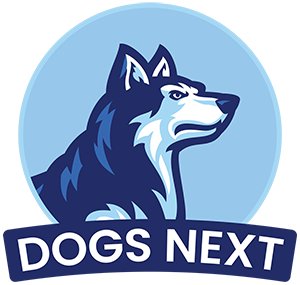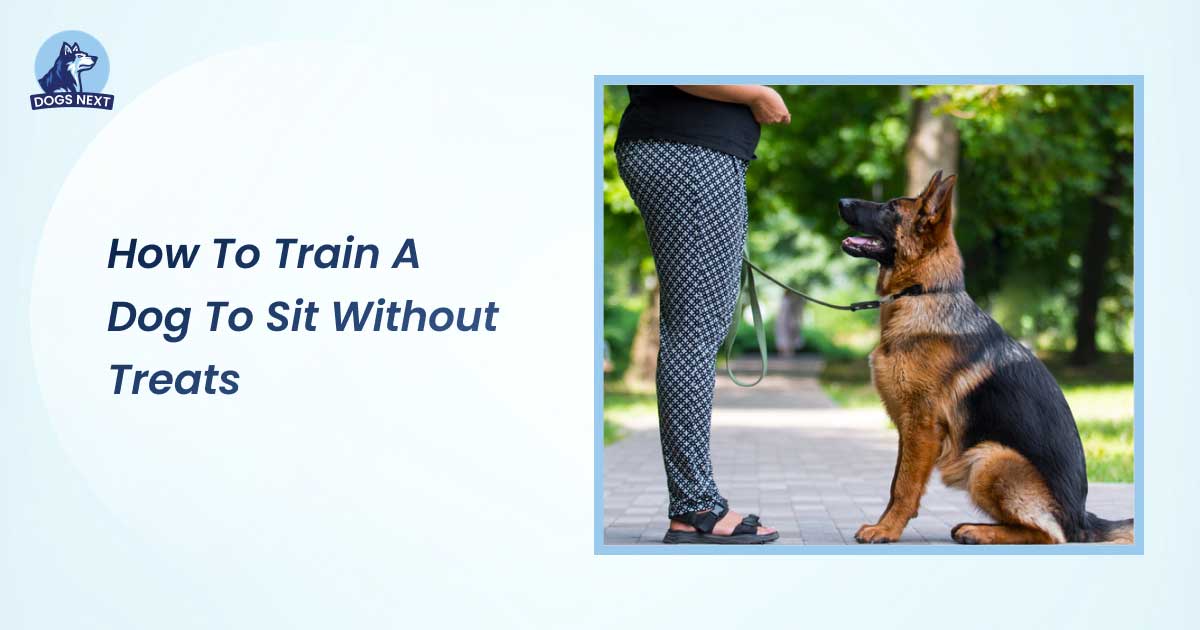Training a dog to sit without treats is possible. You can use other methods.
Many dog owners rely on treats for training. But what if your dog isn’t food-motivated? Or you prefer not to use treats? There are other effective ways to teach your dog to sit. Using positive reinforcement, praise, and consistency, you can achieve the same results.
It might take a bit more patience, but it’s worth it. Training without treats also strengthens your bond with your dog. This approach encourages your dog to respond to your commands, not just the promise of food. Read on to discover various techniques to train your dog to sit without treats.
Using Praise And Affection As Rewards
Training a dog to sit without using treats can be a rewarding experience. By using praise and affection as rewards, you can teach your dog good behavior without relying on food. This method, known as praise training, focuses on positive reinforcement and helps strengthen the bond between you and your pet.
Reinforce The Behavior With Verbal Praise
Verbal praise is an effective way to reward your dog without treats. When your dog sits, use a happy and excited tone to let them know they did a good job. This positive reinforcement encourages them to repeat the behavior.
Here are some tips for using verbal praise:
- Use a consistent phrase like “Good sit!” every time your dog sits.
- Keep your tone upbeat and enthusiastic to convey your approval.
- Make sure to praise immediately after the behavior to reinforce the connection.
Consistency is key in praise training. Always use the same words and tone so your dog understands what behavior you are rewarding. This non-treat training technique helps your dog learn without becoming dependent on treats.
Show Physical Affection Like Petting As A Reward
Physical affection is another powerful reward without treats. Dogs love attention and petting can be a great motivator. After your dog sits, give them a gentle pet or scratch to show your approval.
Here are some ways to use physical affection as a reward:
- Pet your dog on their favorite spot, like behind the ears or under the chin.
- Use a calm and gentle touch to avoid overstimulating your dog.
- Combine petting with verbal praise for a stronger reinforcement.
Physical affection strengthens the bond between you and your dog. It also makes the training experience enjoyable for both of you. This positive reinforcement technique helps your dog associate sitting with pleasant interactions.
Make Sitting A Positive Experience Without Treats
Creating a positive experience for your dog is crucial in non-treat training techniques. Ensure that the training sessions are enjoyable and stress-free.
Follow these steps to make sitting a positive experience:
- Keep training sessions short, around 5-10 minutes, to maintain your dog’s attention.
- Use a calm and positive demeanor to create a relaxed environment.
- Incorporate playtime and other fun activities between training sessions.
By making sitting a positive experience, your dog will be more likely to repeat the behavior. Praise training dogs using affection and attention helps build a strong foundation of trust and cooperation.
Remember to be patient and consistent. Every dog learns at their own pace, and positive reinforcement without treats can take time. With dedication and love, your dog will learn to sit and enjoy the process.
Employing Consistent Commands And Cues
Training a dog to sit without treats can be a rewarding experience for both you and your furry friend. One of the key strategies to achieve this is employing consistent commands and cues. By using repeatable commands and gestures, you can effectively communicate with your dog, making the training process smoother and more enjoyable.
Use The Same Command And Hand Gesture Each Time
Consistency is crucial in dog training. Using the same command and hand gesture each time helps your dog understand what you expect. This method involves consistent dog training cues and verbal command reinforcement. Here are some tips to ensure you’re consistent:
- Choose a simple command, like “sit”.
- Combine the verbal command with a clear hand gesture.
- Make sure everyone in the household uses the same command and gesture.
- Practice in different environments to reinforce the behavior.
Below is an example of how to create consistent commands:
| Command | Hand Gesture |
| Sit | Open palm facing up |
| Stay | Open palm facing forward |
By maintaining these repeatable commands dog training, your dog will quickly learn to associate the command and gesture with the desired behavior.
Keep Sessions Short To Maintain Attention
Dogs have short attention spans. Keeping training sessions brief ensures your dog remains engaged and motivated. Here are some strategies to maintain your dog’s attention:
- Limit sessions to 5-10 minutes.
- Train multiple times a day rather than one long session.
- End sessions on a positive note, even if progress is slow.
Short sessions with using cues training help reinforce learning without overwhelming your dog. Make sure to:
- Observe your dog’s body language for signs of fatigue.
- Incorporate playtime and breaks between training sessions.
- Gradually increase the duration as your dog becomes more comfortable with the commands.
Remember, patience is key. Consistent short sessions will yield better results than infrequent long ones.
Reward Immediately With Praise When They Sit
Immediate praise is essential to reinforce the desired behavior. When your dog sits on command, reward them right away with verbal praise and affection. This creates a positive association with the command. Here’s how to do it effectively:
- Use a happy and enthusiastic tone.
- Pet and cuddle your dog as a form of reward.
- Repeat the praise each time they sit correctly.
Immediate rewards help solidify the connection between the command and the action. Here are some tips to enhance your praise:
| Action | Reward |
| Dog sits on command | “Good sit!” and a pet |
| Dog responds quickly | Extra affection and praise |
Using verbal command reinforcement paired with immediate praise strengthens the training process. Your dog will soon learn that sitting on command brings positive feedback, making them more likely to repeat the behavior.
Incorporating Fun Activities And Play As Motivation
Training a dog to sit without treats can be achieved by incorporating fun activities and play as motivation. This approach not only strengthens the bond between you and your dog but also makes learning a joyful experience. Below are some engaging and interactive methods to motivate your dog using playtime and favorite toys.
Reward With A Favorite Toy Or Playtime
Instead of using treats, try motivating without treats by rewarding your dog with their favorite toy or playtime. Dogs love to play, and this can be a powerful incentive for them to learn commands like “sit”. Here are some ways to use toy rewards effectively:
- Choose a favorite toy: Identify a toy that your dog loves. It could be a ball, a squeaky toy, or a tug rope.
- Immediate reward: As soon as your dog sits, reward them with a few minutes of playtime with their favorite toy.
- Consistent use: Use the toy consistently as a reward during training sessions to reinforce the behavior.
Using playtime as a reward not only makes training sessions fun but also helps in building a positive association with the command. Here’s a simple comparison table to understand the benefits:
| Method | Pros | Cons |
| Treats | Quick results, easy to carry | Can lead to weight gain, dependency on treats |
| Toy Rewards | Engaging, promotes play, no extra calories | Not suitable for all dogs, requires monitoring playtime |
Incorporate Sitting Into Fun Activities
Another effective way to train your dog to sit without treats is by incorporating the command into various fun activities. This method helps in making the command a part of their daily routine:
- Play fetch: Before throwing the ball, ask your dog to sit. This makes sitting a prerequisite for a fun game.
- Hide and seek: Hide somewhere in the house and call your dog. When they find you, ask them to sit before giving them praise and attention.
- Agility training: Incorporate the sit command in between agility courses. This keeps the training dynamic and exciting.
By integrating the sit command into these activities, you are teaching your dog that sitting is a part of play and not just a standalone command. This approach helps in reinforcing the behavior in a natural and enjoyable manner.
Keep Training Interactive And Engaging
To keep your dog interested and motivated, it is crucial to make training sessions interactive and engaging. Here are some tips to ensure that your training sessions are fun and effective:
- Short sessions: Keep training sessions short, around 5-10 minutes, to hold your dog’s attention.
- Variety of activities: Mix up different activities and commands to prevent boredom.
- Positive reinforcement: Use a lot of verbal praise and petting to reinforce good behavior.
- Interactive toys: Incorporate toys that require your dog to think and interact, like puzzle toys or treat-dispensing toys.
By following these tips, you can create a positive and engaging training environment that encourages your dog to learn and obey commands without relying on treats. Remember, training with playtime not only makes learning fun but also strengthens your bond with your furry friend.
Frequently Asked Questions
Can Dogs Learn To Sit Without Treats?
Yes, dogs can learn to sit without treats. Use positive reinforcement like praise or petting. Consistency and patience are key.
What Are Alternative Ways To Train Sit Command?
Use verbal praise, petting, or toys as rewards. Consistent practice and a calm environment help reinforce the command.
How Long Does Sit Training Take?
Training duration varies by dog. Typically, consistent sessions over a few weeks yield results. Patience is essential.
Is It Effective To Train Without Treats?
Yes, it’s effective. Dogs respond well to praise and attention. Building a strong bond enhances training success.
Conclusion
Training a dog to sit without treats is rewarding. Patience and consistency are key. Use clear commands and positive reinforcement. Practice daily for best results. Celebrate small victories with praise. Your bond with your dog will strengthen. Enjoy the journey together.
A well-trained dog is a happy dog. So, stay committed and positive.

I’m David, an expert contributor and writer, with two furry friends of my own, I know the challenges of raising and caring for dogs. From training to nutrition and health, my goal is to provide valuable insights and advice to help create strong bonds and happy, healthy lives. Find me in Twitter.




